
The profession of collegiate strength and conditioning is in a state of failure, and if we do not correct the issues that face us, we will become nothing more than figureheads. That may be a strong statement, but it is quite apparent that there are many things wrong, and we do not seem to be helping ourselves with the actions we are taking.
This article may seem to take a negative tone, and I am sure there are coaches who will take exception to it and may even be offended by the things I say. But keep an open mind, as this article is meant to do no more than create — and in some cases, continue a discussion that needs to take place if we have any desire to create a better world for us to coach in, and more importantly, better possibilities for the athletes, teams, and sports coaches with whom we aspire to help on a daily basis. This article is a charge to us, as strength coaches, to make our world a better, more productive, and more meaningful place to coach.
RECENT: The Specific Demands and Application of Conditioning for Sports
This article series will consist of four parts. The first part of this installment will discuss the lack of respect we receive from and problems that we face with sports coaches. The second installment will cover respect from and lack of understanding of administrators. The third section will include a discussion of our current governing bodies, certifications, and quality of education. The final installment will discuss possible solutions to get our profession on a track that leads to relevance.
The purpose of this article is not to tear down any practice or institution, but rather to identify the problems holding back our profession and to offer solutions that will improve the landscape of and working conditions within collegiate strength and conditioning. This will ultimately yield better training and care for the athletes and teams we are trying to help. The coaches in this industry, myself included, have allowed our profession to be taken in a negative direction. It has been both our actions and our inactions that have led us to where we are today. The state that we are in is no one’s fault but our own.
We Are Creating a Negative Perception
In the weight room, we need to do a better job of serving the teams with which we work. Unless you are a football-only strength coach or the director of a program that covers both football and Olympic sports, chances are that you have had to work with cross country, tennis, golf, rifle, or even bowling. I understand that these are not the fun sports to work with for a few different reasons, which I will not entertain, but these teams are coming to us for help and deserve a quality program from us. What reason could you possibly have to make female golfers do tire flips? Quit being meatheads! We are professionals and need to perform our jobs in that manner.
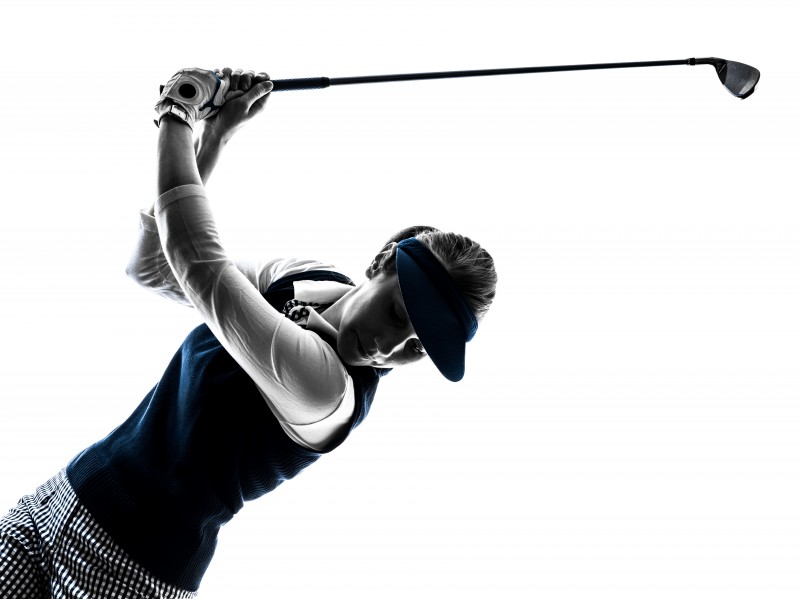
Football players may love doing tire flips, but I can guarantee you that most golfers, tennis players, and rifle competitors probably don’t enjoy it that much. Hardcore strength training is not the mindset of most of these athletes, and more importantly, their coaches. We should not be running teams off because we are training them with unnecessary means. Not being able to differentiate the mentality from sports that we like and sports we, unfortunately, view as a nuisance is just one reason why we get the stigma from sports coaches that we are just running a football program rather than a program designed for their team.
Strength and conditioning coaches not understanding these differences is why sports coaches feel it is necessary to dictate what we will do with their teams. We get frustrated by this, but we have brought this on ourselves. We expect female tennis players to embrace performing sets to failure on the squat, but most of them will hate this with a passion, resulting in them and their coaches not wanting to utilize the weight room. Should tennis players squat? I believe they should, but they probably do not need to copy the same set and rep scheme that the football team just did earlier that day. Not all teams are the same, and we need to start recognizing the differences. More important than the physical differences is that there is a complete difference in mentality between some sports, and we need to keep that in perspective.
What Are We Accomplishing?
How do we know if we have helped a player improve their performance or stay injury-free? A squat number certainly does not dictate how well a receiver can make catches and evade defenders. A clean PR does not indicate how many double plays two middle infielders can turn. And what exactly does a big bench accomplish?
READ: Why Sports Coaches Don't Trust Strength Coaches
Certainly, if we can get a basketball player faster, they will score more points. Are you sure? What about a soccer player improving their time in Arrowhead Agility? After lowering their time, I’m sure defenders never miss when trying to take balls away from opposing forwards.
How about injuries? Does performing heavy Romanian deadlifts or banded TKEs mean that we will have fewer ACL tears? According to some athletic trainers and physical therapists, Romanian deadlifts predispose athletes to lower extremity injuries and can also make athletes slower. While we believe that correctly managing volume and intensity in the weight room will decrease injuries in the sport, how do we actually know what parameters we should be using? Does anyone have any hard evidence to show what intensity, volume, and exercises we should be using as the season progresses? If they do have this evidence, could they please point me to a textbook or conclusive research that gives exact weight room parameters for decreasing injuries on the field of play? Will having an athlete stretch before or after a workout mean they will not get hurt? Does having a good score in any one of the many functional movement tests eliminate the possibility for injury?
Keep in mind when answering these questions that it is impossible to actually know if you have prevented injuries. It is not possible to know if an injury was prevented when you cannot possibly know that the injury was going to occur in the first place. We can only know if we had more or fewer injuries than the previous year. Having fewer injuries does not indicate prevention; it only indicates having fewer injuries. Furthermore, it is possible to know potential indicators of injury, but not whether or not an injury will actually take place.

Unlike Newton’s universal law of gravitation, there are no concrete laws in sports science. No, getting a bigger squat does not equal more home runs. And acing the latest movement screen does not automatically produce an injury free season.
It is possible to know if we have aided in the development of stronger, faster, more agile, better conditioned, and injury-free athletes? All of these things can be tested or recorded in an objective manner. So, from a general testing standpoint, we can say we accomplished our goals IF we test our athletes regularly with standardized tests and consistent procedures.
However, do any of these things automatically result in improved sports performance? If you answered yes, how do we objectively evaluate whether an athlete is actually a better athlete in their sport? I have seen it many times, but a head football coach recently pointed out to me an athlete who, within his five years of college football, got stronger, faster, and looked great at every agility drill. In fact, this particular player was one of the strongest and fastest players on the entire team as a wide receiver. Unfortunately, he was never a good enough football player to be on the field for more than a few plays in lopsided games.
RELATED: How Strong is Strong Enough?
Testing should be a part of any quality strength and conditioning program. Testing is the one objective measure that can show that our programs and coaching are yielding improvement in athletes' abilities. We have tests that can accurately measure the improvement in strength, speed, agility, conditioning (endurance), and movement to measure quality functional movement. However, none of these tests can objectively determine improvement in actual sports performance.
We need the creation of new tests that directly show whether improvement has been made in actual sports skill. Sports scientists will need to research each individual sport and find ways of testing and measuring improvement in sports skills, and furthermore, what training means correlate best to those sports skills. The key here is that we are actually testing sports skills rather than just physical abilities. However, the question remains whether or not sports skills can be quantified by an objective measure rather than the old eye test.
What determines the efficacy of the means we use? How do we actually know what we are doing is productive? This is a fault I have seen in many coaches, and I am guilty of this in some instances. Just because you say something works does not mean it actually accomplishes what you say it does. Unfortunately, the same is true for written or other produced means of information. Where is the proof that a training means is actually effective? This is where testing and research need to come in to play.
Our tests need to establish that what we are trying to achieve is actually being accomplished. Research needs to either compile testing results or find ways to show that these results correlate to sports performance, injury prevention, etc. If we cannot find a way to do this, sports coaches will never be fully convinced that what we are doing is actually beneficial and necessary. More importantly, they will not believe we actually know what we are doing, and will instead continue to micromanage us with unfounded reasoning.
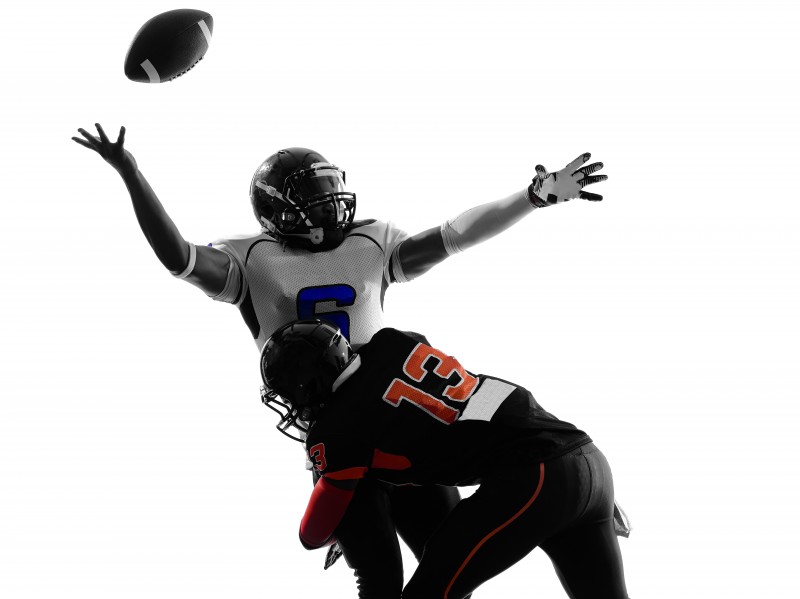
Whether it’s said or unsaid, sports coaches know we cannot quantify or even accurately know what influence we are making on the outcome of games. In fact, our role is probably minimal at best in this regard. Good teams with poor strength and conditioning programs still win, and poor teams with good strength programs still lose. We do physically prepare athletes for the game, but not only does this not predict wins and losses, but it also does not predict a lack of injuries. Preventing injuries is a highly multi-faceted process that is still widely undetermined of which results can be attributed to which means.
We can minimize — and in large part, eliminate — non-contact, soft tissue, and overuse injuries. But we only have so much control over running and change of direction mechanics, especially when coaching in a team setting. Due to the chaotic nature of many sporting situations, the likelihood of an athlete getting out of position is increased, regardless of how well they have been coached, which escalates the potential for injury.
Furthermore, we cannot control the living habits of athletes outside of our workouts, including but not limited to: hydration, nutrition, sleep, alcohol/drug use, academic stressors, family/relationship stressors, and completion of training outside mandatory periods. All of these factors, which we cannot control, can increase the risk of injury.
Meeting Expectations
In the realm of athletics, we strive to appease sports coaches rather than relegate them to their role as the head coach of a sport and empower the strength and conditioning coach to be able to fully utilize his or her knowledge and abilities. Many strength coaches, especially younger coaches, are not allowed to perform their job due to micro-management by the head sports coach. Many times, the sports coach is inadequately educated, which results in too much bias being utilized to construct poorly laid out and inefficient plans.
WATCH: Rugby Top-5 Strength and Conditioning Picks
Furthermore, the strength coach begins to take a mindset that he or she must plan in a manner to keep the sports coach happy rather than utilizing the best means of training possible with appropriate programming. This hesitancy becomes a subconscious train of thought, in which the worst situations places athletes at risk. Empowering the strength coach would not be a reduction in role for the head coach, but rather a separation of powers.
Unfortunately, the nature of the strength coach’s job allows this pressure to put athletes at risk. Conditioning strategies that can be considered nothing less than insane end up being implemented that are not suitable for the current state of readiness of the athletes participating. Each year, we hear about the unfortunate cases of rhabdomyolysis and even death. This pretty much occurs like clockwork every January and February and June.
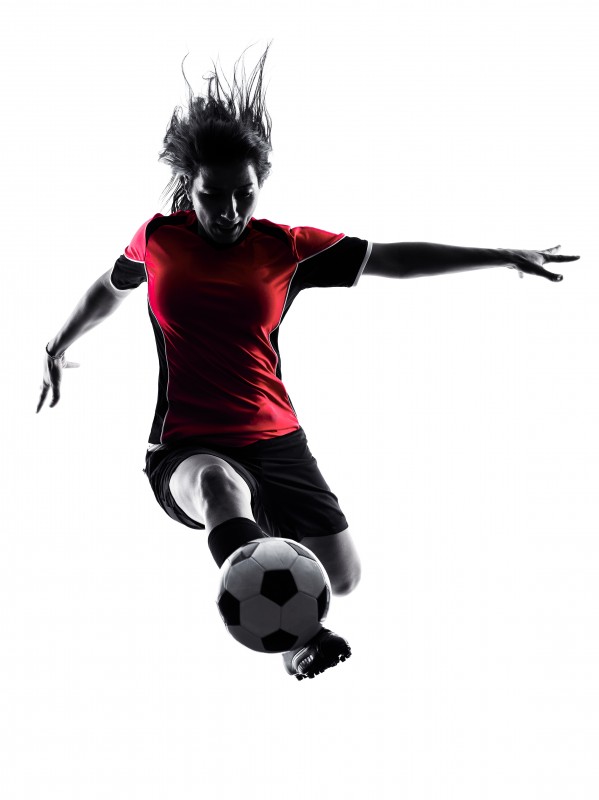
The questions to ask about these issues are: Why do these practices take place? Is the strength coach being pressured to employ these tactics, or does he or she feel a need to utilize means of this nature because of the head sports coach? Is the strength coach trying to impress the sports coach by how hard he or she can make the workouts? Is the strength coach trying to prove a point to the athletes? Or, does the coach even know how to logically begin and progress the means of training that are being used so that these things do not occur?
Does A Strength Coach Have Any Authority? Should We?
This brings in to question how much authority a sports coach should have over the strength and conditioning practices for his or her team. When can a strength coach assert authority over training decisions? The current practice is that the strength coach does not really have any authority, although in many cases it is granted — with an unspoken pressure being placed on the coach to implement means that may be questionable in nature so the workouts appear tough and gut-wrenching.
For example, a football coach decides he wants a certain conditioning workout performed in January when the team returns from the semester break. In order to set the tone for the upcoming year, the workout is overly difficult due to the poor season the team had finished in November. The football coach, who has no related formal education, obtained this workout from one of his old college buddies who is now a personal trainer at a small fitness gym. The football coach provides the workout to the strength coach to be implemented during the first week of training.
The strength coach views the workout and immediately makes an evaluation that the program is unsafe and dangerous. But what authority does he or she have to tell the football coach that he or she will not implement the workout? This scenario places an already vulnerable coach in a precarious situation.
If the strength coach follows his or her conscience and refuses to implement the workout, he or she could be fired. If he or she implements the workout, and a group of athletes is hospitalized with rhabdo, or if a kid collapses and dies, he or she will be fired. It’s a lose-lose situation. The only viable option is to implement the workout and hope that nothing goes wrong.
TRY THIS PROGRAM OUT: The Art of Programming for Injury Prevention/Risk Management
At what point can an educated, fully qualified strength coach tell an uneducated, emotionally driven, decision-making, seven-figure-salaried football coach that he or she will not follow his direction for the safety of the athletes? In too many cases in the model we are currently following, this is not permissible.
Beyond the safety of athletes, the real problem that must be overcome is what authority the sports coach has over his own team. The sports coach is the one that is ultimately responsible for wins and losses, and the strength coach is meant to provide support for that team. We are support staff.

At what point does the NCAA or each institution decide what boundaries exist between the sports coach and strength coach? Who takes the fall for a losing season when things go wrong? How is this evaluated? If claims are made that the strength and conditioning program resulted in unnecessary injuries, how do we determine that this is true? How do we evaluate if injuries are actually a result of the strength program or from practice habits determined by the sports coach? How do we determine if the conditioning program was or was not sufficient to keep the team in proper shape to play the game without being fatigued?
The issues mentioned above make it very difficult to allow the strength coach to have authority over these decisions, but also allow coaches with little relevant education to make decisions or place immense pressure on strength coaches to implement workouts that place athletes at significant risk in any given situation.
Football, Really? Who’s Designing the Bridge?
A common belief of many sports coaches is that we, the strength coaches, are simply implementing a football program. If you are a strength coach who works with both football and Olympic sports, I’m sure you have heard this complaint.
While I have seen strength coaches who do not understand how to differentiate between football and other sports, I think this claim by sports coaches is mostly unfounded. Just because the squat is used with both football and other teams does not mean that every program is a football program. The overwhelming majority of weight room exercises are general exercises that strengthen specific muscle groups or generalized movements. Therefore, many of these exercises can be utilized by most sports effectively. The application of these exercises between sports, however, may be quite different.
However, sports coaches do not see it that way. It is our job to educate them on how the weight room correlates to the game. Unfortunately, this is not an easy task, and as a whole, I would say that we have not been successful in this regard. It is for this very reason that strength coaches who work with both football and other sports continuously face the battle of programs for the non-football teams being referred to as a football program.
The coaches say this because they see their team doing the same exercises as the football team does. What they fail to see is WHY their team is utilizing that exercise. Most teams I work with squat in some way and many with various techniques. Depending on the style of squat, it can be argued that the squat is the best leg strengthening exercise we use. So, wouldn’t it make sense for any athlete that needs stronger legs to utilize the squat in their training?
LISTEN: Beyond Sets and Reps Podcast #3 with Dr. Bryan Mann
However, one key difference in using the squat is the intensity and volume of squatting being performed. If you have a freshman offensive lineman who only weighs 240 pounds, doing high rep sets of the squat to put on muscle mass would be extremely beneficial. However, not many female soccer players need to gain 50 to 60 pounds. Therefore, sets of 10 to 15 reps may not be that necessary.
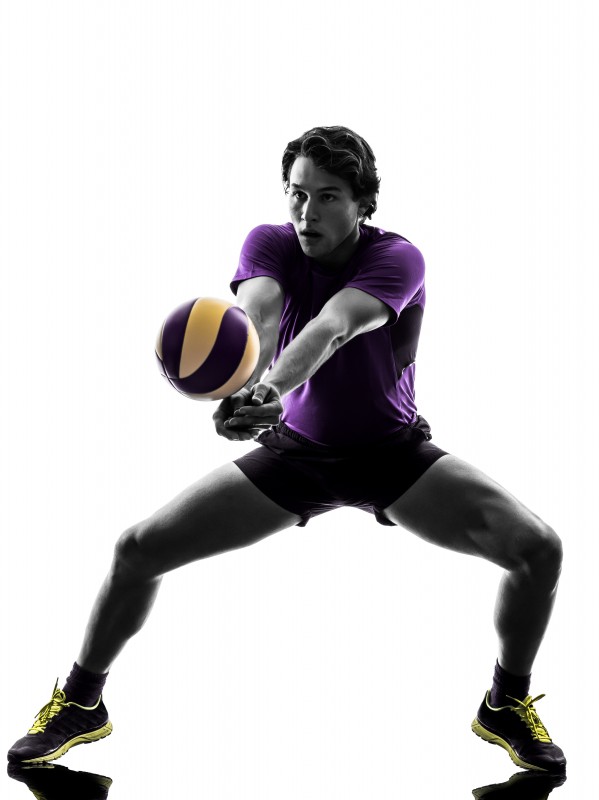
Unfortunately, since football players squat and they are big, the soccer coach interprets your soccer program as being a football program for no other reason than you have the same exercise in both programs. The fact that those girls need leg strength to aid in acceleration, deceleration, change of direction ability, and prevention of ACL injuries is the furthest thing from that coach’s mind. All they care about is that squatting makes it a football program and that their athletes are going to bulk up.
In reality, blindly saying a strength program is a football program shows a lack of comprehension of what strength training does and how the body adapts to general means of training. This is the same level of comprehension that we are allowing to dictate how athletes are being trained. Unfortunately, the athletes’ performance is compromised and the risk of injury is increased by utilizing inefficient and sometimes improper means of training.
If engineers designed bridges with the same haphazard and random mindset as many coaches utilize to train athletes, we would have thousands of people dying every day as they drove across it. It would become a guessing game every time you drove across a bridge as to whether you would make it across, get a trip to the hospital, or die. Sound familiar?
Selling Bells and Whistles
Sports coaches want to see visible, tangible improvement in sports performance other than “he is faster” or “she is stronger.” They want to see athletes make plays. Unfortunately, since we don’t have an objective testing measure for sports performance, the smoke-and-mirrors-used-car-salesman strength coaches have been successful in creating a gigantic facade for those of us who implement real training to overcome.
Many uneducated and sell-out, so-called strength coaches have found ways to make sports coaches believe they are accomplishing something when in reality, they are doing nothing productive. The sell-outs of this world make a living with no more than bells and whistles. They convince sports coaches that these small, cute exercises are the difference makers that are going to take their team to the next level or prevent every possible injury. However, these exercises fail to accomplish anything more than a selling point. They do nothing to actually create changes in strength, speed, or movement quality.
To the uninformed coach, the idea can be sold quite easily. The ideas simply sound good, especially when they are being sold to an audience that is uneducated in sports science, and more specifically, strength and conditioning. Due to this fact, it is very difficult to combat these smoke-and-mirrors coaches.
READ MORE: Outlast the Fitness Industry Copycat, Critic, and Cutter
Conclusion
One of the primary functions of a strength coach’s job is to serve the teams we work with, and henceforth, the sports coaches of those teams. This is not an easy task, considering that many sports coaches do not understand what we do or how we do it, and furthermore, have their own uneducated, preconceived notions of what they think we should be accomplishing.
It would be nice if we had absolute authority over all strength and conditioning-related issues, but this may not be feasible since it is the sports coach who is ultimately responsible for wins and losses. However, we are the ones that hold a certification and degree while the sports coach likely majored in economics.
Ultimately, we have failed to gain trust. Trust is earned. What are we doing to earn the trust of sports coaches?
Recommended Reading
Watts, Mark. (Aug. 19, 2016). Why Strength Coaches Quit and Why the People that Hired them Don’t Care.
Header image courtesy of sevenozz © 123rf.com
Inline images courtesy of ostill © 123rf.com
David Adamson was the strength and conditioning coach for the Missouri University of Science and Technology from 2016 to 2018 and now serves as a consultant for collegiate strength coaches. Prior to Missouri S&T, he spent nine years as the assistant director of speed, strength, and conditioning for the University of Texas at El Paso (UTEP). He was involved in coaching at the university level from 2001 to 2018, including stops at Virginia Commonwealth University and Arizona State University. In addition to coaching, David is a student of strength who lives by his experience under the bar. He began lifting in 1993 and competed in powerlifting from 2001 to 2016. During this time, he competed in many different gear divisions, including raw, and in every weight class from 181 to 242.










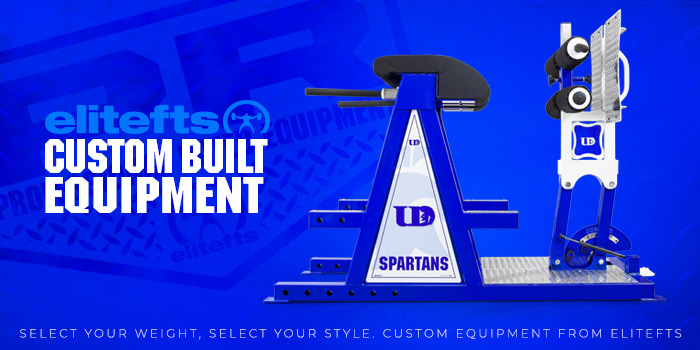
In the example of the football player who was one of the strongest and fastest on his team, yet got few snaps, don't we need to differentiate between being a great "athlete" and "football player" in this instance? And since some kids lack instincts, coordination, grace, the things that you can't really coach after a certain age, can't we argue that sheer athleticism can make up for this a LITTLE bit in some instances? Better yet, I bet the football player you described could be an all-conference sprinter, but football brings in the money and attention from colleges and professional teams, so why would he want to go compete at running? That being said, should someone say to that kid "You're a decent football player, but I think you would make an AWESOME sprinter"? And if so, who? I would like to think it's the parents, but we both know that isn't going to happen.
As for the dynamic between sports coaches and the strength and conditioning staff, have you found that some sports coaches are actually receptive as to WHY you have their tennis players squatting? It seems to me that if I patiently explained to the golf coach why I have his/her golfers performing hex bar deadlifts (more glute and hip strength = longer drives = shorter club to the green = more birdies), they might understand- even appreciate- why I'm doing what I'm doing. That being said, it should be a conversation, not a sermon, correct? I'd like to think that if I become a S&C coach I won't become "married to" my preferred methods of training and that I can be flexible with meeting coaches' requests while still accomplishing the goal (faster, stronger, safer athletes). Have you had to accommodate coaches' parameters even though you just want to say to them "Look, I know what I'm doing"?
I hope those are sensible questions; if not just say so and I'll run along! Either way, I've enjoyed the first two articles in this series and I'm looking forward to reading the next two.
The above link was emailed to me as it relates to this article. Toward the end of the article it discusses NCAA recommendations to place strength & conditioning coaches under the supervision of the medical staff. I see this as an attempt to solve a problem that has been unnecessarily created.
Unfortunately, I also feel this is not a good direction for strength & conditioning. While the medical staff does have a sound knowledge in anatomy, functional anatomy, and physiology, they lack the knowledge and skills necessary for physical preparation. This results in a highly biased view of what should be taking place in within workouts, ranging from workout structure all the way to exercise technique. I have personally dealt with this many times.
The lack of knowledge in these areas results in the medical staff/athletic trainers being overly opinionated and outspoken based on their own personal opinions rather than actual knowledge. I have actually seen them attempt to use their "unchallengeable authority" to overrule coaches (both strength coaches and sport coaches alike) on decisions regarding HEALTHY athletes. This is NOT the place of an athletic trainer. To take this a step further, I have also seen the athletic trainers tell athletes that what the coach is having them do is wrong and then proceed to tell the athletes to do things a different way. Again, this is not the place of an athletic trainer. Actions of this nature undermine the competence of a strength coach and create internal problems that are left to the strength coach to resolve.
I do feel that strength coaches and athletic trainers should fall under the same umbrella, but should also remain in athletics. No, sport coaches should not have a say in the termination of any strength coach or athletic trainer. There needs to be an administrator with an intimate knowledge of physical preparation and medical needs that oversees the strength & conditioning and athletic training departments. This administrator would handle all hiring, evaluations, discipline, and dismissals for these two departments. I discuss this in greater detail in the fourth part to this article.
I am going to try to answer this the best I can without writing a complete separate article, which I probably could given the nature of your questions. If I am unclear, feel free to contact me directly. I will leave my email at the bottom of the post.
Being a great athlete is not determined by how fast or strong someone is unless you are referring to a strength athlete or track athlete. A good D1 football player is a great athlete, but not as great as an NFL player, which is not as great an athlete as an NFL star. By every test performed, this particular player would match many good D1 players, but he wasn't capable of seeing the field at the D2 level. So, no I would not consider him a good athlete. But, considering the first sentence of this paragraph, he began doing CrossFit after he finished playing football and was doing pretty good.
As far as switching over to track, I'm not sure. There is a big difference between running 15-40 yd bursts and running a 100M or a 200M. BIG difference. I have seen several very fast D1 football players try to run in track meets and struggle to even break 11 seconds in the 100M. I'm talking about 4.3 and 4.4 sec 40 guys. They are just not trained to run those distances. Furthermore, most football players (WRs and DBs) weigh 15-30 lbs more than the average sprinter, and over the course of 100M, that makes a difference. Remember, after 50-60 meters, the sprinter is essentially slowing down. A heavier sprinter usually slows down at a faster rate.
In the article, I only listed the bad side of working with sport coaches in order to prove a point. I have worked with sport coaches who fully backed what I did in the weight room with their team. I have also worked with some that were skeptical, but allowed me to do my job. Some coaches care as to the "why" and some don't. Sometimes explaining the "why" just falls on deaf ears. They just don't care and simply want things the way they want them due to any number of reasons which may be justified or unjustified.
Yes, I have absolutely accommodated sport coaches requests/demands. I would always try to weigh the risk/reward in these situations. I would also pick my battles. If a coach wanted me to cut out squatting, I would at least explain my reasons for squatting and try to convince them otherwise. But, in the end it was the sport coach's call. This concept is something that needs to change. Sport coaches should not be making the call in areas that they are uneducated.
One year, I had a soccer coach want to completely change all aspects of training in the middle of a season. I fought him on this issue until he demanded that I make the changes. I think this argument/discussion lasted about 2 weeks. In the end, I made the changes he wanted. At this point in time we were 9-1 with almost no injuries. Within a short period of time our injuries started accumulating and our losses went up. If I remember correctly, at the end of the season, we had had four season ending injuries and I'm not sure if we even had a .500 season. The training we switched to overtrained the athletes and did it fast. After the season we met to discuss the training and he wanted to continue training the way we had switched to mid-season. I fought him on this, again, and I ended up being removed from the team. I felt like a failure, but it really wasn't my fault. Unfortunately, this coach really had no clue as to why he wanted the team to train in this manner. He had an assistant coach in his ear and whatever that assistant said, he believed. Unfortunate for the team!
David Adamson
davidadamson1979@gmail.com